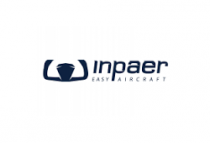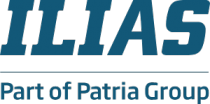Global Market for Self-Cleaning Coatings (2020 to 2030) - Featuring Adaptive Surface Technologies, Advanced Materials-JTJ & TOTO Among Others - ResearchAndMarkets.com
The "The Global Market for Self-Cleaning Coatings 2020" report has been added to ResearchAndMarkets.com's offering.
Most self-cleaning coatings on glass can be divided into two categories, hydrophobic and hydrophilic.
Hydrophobic surface finishes are inspired by the self-cleaning mechanism of lotus plants and other organisms (e.g., many large-winged insects). They have been applied to paints, glass, textiles, and more, reducing the need for chemical detergents and costly labour. The coatings unique nano-textured surface and overcoat reduces surface energy and contact surface area, giving the coatings anti-contamination and self-cleaning properties that minimize dust, liquid, and ice accumulation on its surface, similar to a leaf on the Lotus plant.
Hydrophilic self-cleaning coatings utilizes photocatalytic decomposition to self-clean glass. The working principle of the hydrophilic layer is based on having a film of titanium dioxide coating, which has two working stages: the photo-catalytic stage and the hydrophilic sheathing stage. During the hydrophilic" stage, rain washes away the dirt and leaves almost no streaks on the glass as the hydrophilic glass spreads the water evenly over the surface coating. Self-cleaning surfaces based on photocatalytic processes are applied in areas such as buildings, road paving, vehicle side-view mirrors, lamps, and even in textiles. Among the nanoscale semiconductor materials based on oxides, titanium dioxide (TiO2) is widely used.
Report contents include:
- Evolution of self-cleaning coatings to now and future prospects.
- Development of self-cleaning coatings-production methods, recent developments, new products.
- Analysis of hydrophobic and hydrophilic surfaces and the emergence of super-hydrophobic and super-hydrophilic coatings technologies.
- New developments in self-cleaning coatings including multi-functional and smart self-cleaning coatings.
- Applications and market analysis for self -cleaning coating in Construction, Automotive, Solar, Textiles and Apparel, Consumer Electronics, Medical Coatings, Marine and Household Care sectors.
- Revenue forecasts to 2030 across all sectors.
- 132 company profiles including products and target markets. Companies profiled include Adaptive Surface Technologies, Advanced Materials-JTJ s.r.o., TOTO, Pureti Group LLC, Swift Coat Inc and many more.
Key Topics Covered:
1 Executive Summary
2 Development of Self-Cleaning Coatings
2.1 Properties
2.2 Benefits of Using Nanocoatings
2.3 Production and Synthesis Methods
2.4 Hydrophobic Coatings and Surfaces
2.5 Superhydrophobic Coatings and Surfaces
2.6 Oleophobic and Omniphobic Coatings and Surfaces
3 Self-Cleaning Nanocoatings Market Analysis
3.1 Self-Cleaning Hydrophobic Coatings
3.2 Self-Cleaning Hydrophilic (Photocatalytic) Coatings
4 End-User Market Analysis for Self-Cleaning Coatings
4.1 Automotive
4.2 Construction
4.3 Household Care, Sanitary and Indoor Air Quality
4.4 Marine
4.5 Consumer Electronics
4.6 Medical & Healthcare
4.7 Textiles and Apparel
4.7.1 Market Drivers and Trends
4.7.2 Applications
4.7.3 Global Market Size
4.7.4 Companies
4.8 Energy
4.8.1 Market Drivers and Trends
4.8.2 Applications
4.8.3 Global Market Size
4.8.4 Companies
4.9 Aviation and Aerospace
4.9.1 Market Drivers and Trends
4.9.2 Applications
4.9.3 Global Market Size
4.9.4 Companies
5 Self-Cleaning Coatings Companies
6 Research Methodology
6.1 Aims and Objectives of the Study
7 References
For more information about this report visit https://www.researchandmarkets.com/r/a21scs
View source version on businesswire.com: https://www.businesswire.com/news/home/20200813005488/en/



